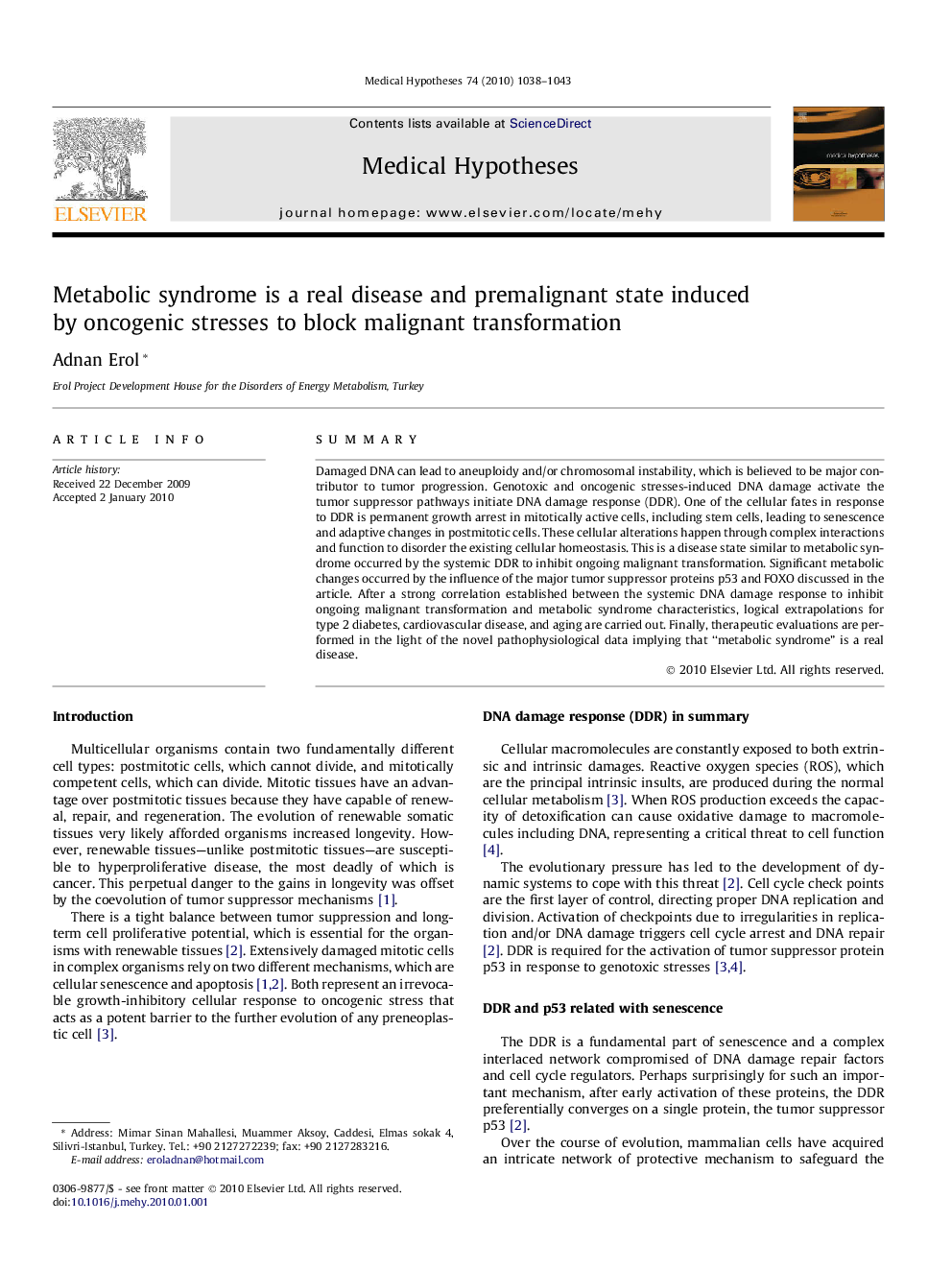| Article ID | Journal | Published Year | Pages | File Type |
|---|---|---|---|---|
| 2489790 | Medical Hypotheses | 2010 | 6 Pages |
SummaryDamaged DNA can lead to aneuploidy and/or chromosomal instability, which is believed to be major contributor to tumor progression. Genotoxic and oncogenic stresses-induced DNA damage activate the tumor suppressor pathways initiate DNA damage response (DDR). One of the cellular fates in response to DDR is permanent growth arrest in mitotically active cells, including stem cells, leading to senescence and adaptive changes in postmitotic cells. These cellular alterations happen through complex interactions and function to disorder the existing cellular homeostasis. This is a disease state similar to metabolic syndrome occurred by the systemic DDR to inhibit ongoing malignant transformation. Significant metabolic changes occurred by the influence of the major tumor suppressor proteins p53 and FOXO discussed in the article. After a strong correlation established between the systemic DNA damage response to inhibit ongoing malignant transformation and metabolic syndrome characteristics, logical extrapolations for type 2 diabetes, cardiovascular disease, and aging are carried out. Finally, therapeutic evaluations are performed in the light of the novel pathophysiological data implying that “metabolic syndrome” is a real disease.
